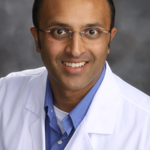A dental sleep medicine expert discusses screening tools, co-treating patients with physicians, and continuing education opportunities.
Dentists and dental hygienists are trained to evaluate the entire patient, not just the oral cavity. For this reason, we become increasingly important in the diagnosis of sleep breathing disorders. Even with a limited appointment time, dentists can recognize traits, characteristics, and behaviors that predispose patients to a variety of systemic conditions, including sleep disorders. The fact that dentists work with the mouth, which is the upper end of the airway, plays a key role in the diagnosis of sleep breathing disorders. Additionally, dentists can identify large tongues, extended soft palates, and other conditions that can signal sleep breathing disorders.
Availability of Proper Screening Tools
At a patient’s dental appointment, various tools used regularly by dentists can significantly expedite the diagnosis of sleep breathing disorders. One of the main reasons dentists are in a unique position to provide limited medical therapy for patients with sleep breathing disorders is their ability to screen and refer suspect patients to physicians for further diagnosis and treatment.
Screening tools can be utilized during the dental hygiene appointment to properly identify patients who are at risk of sleep breathing disorders. The screening tools that can be used include:
- A simple questionnaire
- Visual intraoral assessment
With these two screening options, dentists can successfully identify patients who are at risk for sleep breathing disorders, or those who may already suffer from them.
Availability of Co-treating Patients
While dentists have the unique opportunity to identify sleep breathing disorders, the biggest role they have in this area is the opportunity to co-treat the condition with the patient’s physician using oral appliance therapy, oral surgical procedures, or even orthodontic approaches. These dental approaches address increasing the volume of the upper airway primarily by bringing the tongue forward away from the throat.
With advanced research, there has been mounting evidence that via both the oral appliance therapy and surgical hard tissue approaches, dentists can successfully treat patients suffering from sleep breathing disorders. For this reason, it is more important than ever for dentists to complete continuing education courses to better understand diagnosis and treatment options for this unique field.
Availability of Continuing Education
As dental sleep medicine continues to gain popularity in the dental field, dentists are in a great position because of the availability of ongoing continuing educational opportunities. Dentists can easily find credited classes to help them advance their knowledge of dental sleep medicine from university programs and even lecturers. With the ever-growing availability of continuing education courses, dentists are at a unique advantage to constantly improve their knowledge while further expanding their dental practice with advanced services, including dental sleep medicine.
Most patients show signs and symptoms of sleep breathing disorders before they are formally diagnosed. Dentists can identify symptoms early on. From proper screening tools to co-treatments and continuing education, dentists can improve patients’ oral and overall health through dental visits and better understanding sleep breathing disorders.
Mayoor Patel, DDS, MS, is the owner of Atlanta’s Craniofacial Pain and Dental Sleep Center of Georgia. As an expert in dental sleep medicine, he offers consulting
services and leads lectures to further improve the knowledge of dentists and their dental teams. He works with dentists and their teams to help everyone better understand sleep breathing disorders and how to prepare a dental office for these patients. Contact Patel via his website.






